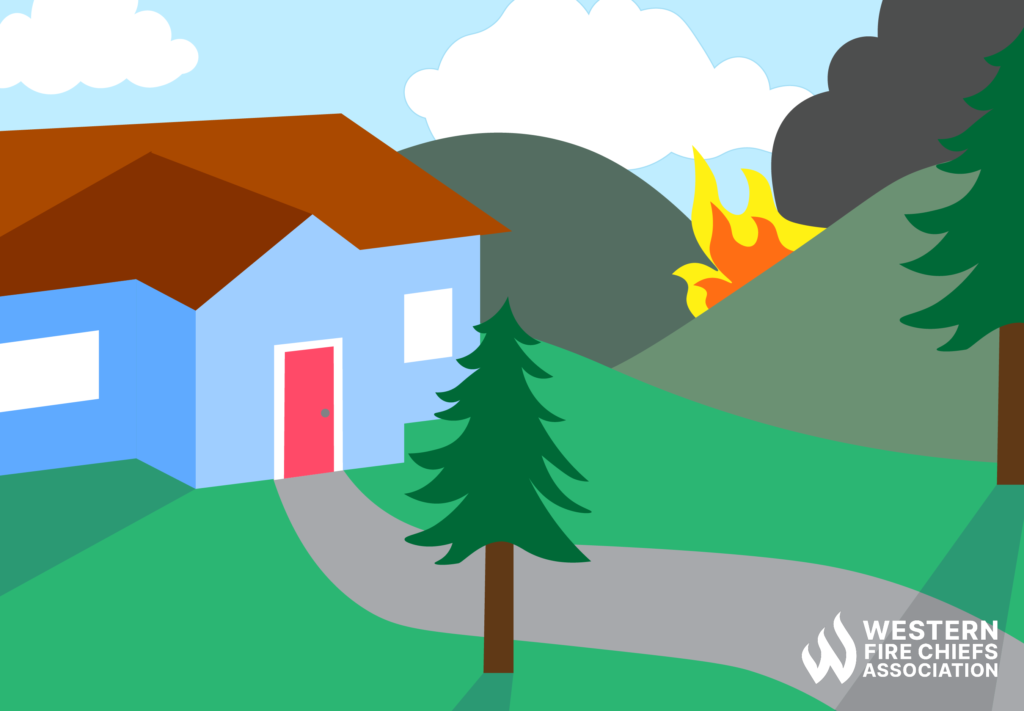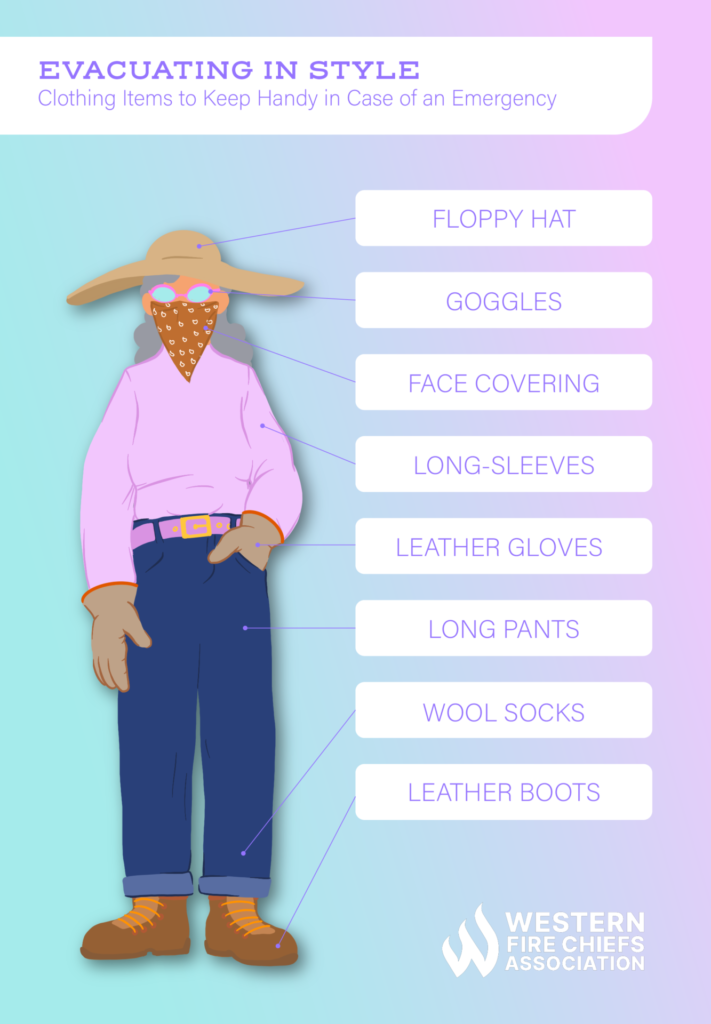Fire Pit Safety Tips
Stay safe around the campfire with tips from the Western Fire Chiefs Association. Learn essential precautions and practices for a worry-free outdoor campfire.
Be prepared for a fire evacuation. Learn what you should put in your fire emergency kit with expert guidance from the Western Fire Chiefs Association (WFCA).
Published:October 4, 2022
Edited:March 4, 2024
Be prepared for a fire evacuation. Learn what you should put in your fire emergency kit with expert guidance from the Western Fire Chiefs Association (WFCA).

An active wildfire can leave you with little time to prepare. You may only be able to grab the bare essentials before being forced to evacuate. That is why it is essential to know what to put in your fire emergency kit so that it is ready to go at any time. It is particularly important to have one if you live in an area where wildfires tend to occur, such as the western United States.1
In this article, we list the essential items for your fire emergency kit, the items to take if you have time to grab them, how to dress for evacuation, where to store your fire emergency kit, and the importance of maintaining it.
As you start building your fire emergency kit, you may wonder what to prioritize. You may be tempted to include electronics, jewelry, or other expensive items, but we recommend you focus on two specific categories instead:
In the first category, important documents may include the deed to your house, bonds, passports, social security cards, marriage license, and birth certificates. Each of these are difficult to replace unless you are able to produce several forms of personal identification.
For the second category, here are a few items that will help you evacuate the fire and then survive in the aftermath:2
These items will help you live outdoors for a few days, long enough to reach a firefighter encampment or for a rescue team to find you.
In certain circumstances, you may need to add more items to this list – for example, if you have pets, be sure to pack food, water, and leashes for them.
If you have plenty of warning that a wildfire is headed your way, you may have time to grab a few other items that are not essential, but still valuable. These items may include:
Obviously, if you do not have time to grab anything other than your fire kit, make it your top priority to evacuate immediately. While the objects on the above list may be precious to you, they are not worth risking your life or the lives of family members to save.

If you have time, dress to evacuate a fire. Wear clothes made of natural materials, such as wool or cotton, as these are less flammable than synthetic fibers. In addition, cover as much skin as possible to protect yourself from getting burned by embers or flames.
Here is a list of clothing you should keep ready in case of a fire.3
After building your fire kit, you must store it in a place that you can quickly and easily access in case of an emergency.
At home, consider putting your fire emergency kit in a closet or a storage container near the door where you will be exiting. At work, place it in a cabinet or a drawer in or near your desk. Finally, consider keeping an extra fire emergency kit in your vehicle.
Regardless of where you put your fire kit or how many you have, make sure everyone in your household and/or workplace knows where it is. Also, ensure the storage area is cool and dry to prevent food items, medications, etc. from going bad before their expiration dates.
Once you have put together your emergency fire kit, make sure to keep it maintained.2 Regularly check the canned goods and other non-perishable foods to make sure they have not expired. If they have or will expire soon, replace them with new ones. Do the same for the items in your first aid kit, your wet wipes, prescription drugs, and any other items that can go bad, dry up, or no longer be effective over time.
Additionally, you should periodically check your batteries and electronic devices, such as your radio, to verify they are still in working order.
Finally, at least once or twice a year, assess the contents of your fire emergency kit. Is there anything you thought of that you need or do not need? If so, adjust your kit’s contents accordingly.
Having a fire emergency kit in your home is always a smart idea, whether you live in a high-risk wildfire area or not. Fires can happen at any time, but keeping a fire kit well-maintained and easy to access means you will never be caught without the resources you need for you and your loved ones to survive an emergency situation.
Stay safe around the campfire with tips from the Western Fire Chiefs Association. Learn essential precautions and practices for a worry-free outdoor campfire.
Discover essential firework safety tips to ensure a dazzling display without accidents. Learn how to celebrate responsibly with expert guidance from WFCA.
Explore the role of AI in wildfire prediction with guidance from the WFCA. Learn how advanced algorithms and data analytics enhance early detection and response.